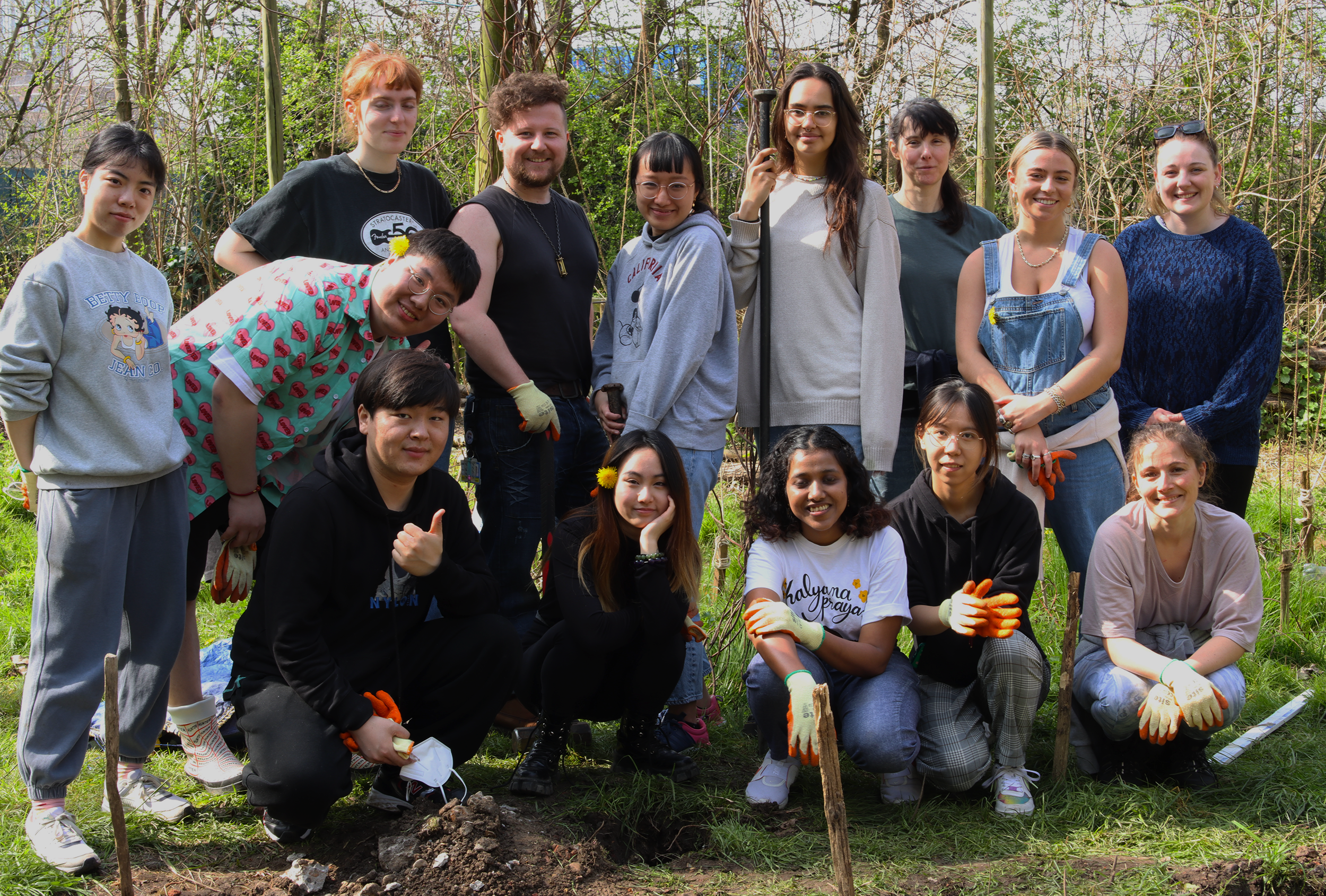UAL builds a community dye garden at Stave Hill Ecological Park

- Written byAnnika Loebig / Alex R. Cifre
- Published date 12 April 2022

Between March and July 2022, students and staff from across UAL are getting together to build a dye garden in Stave Hill Ecological Park, in East London. The initiative aims to encourage designers to take a more sustainable approach to working with organic-based textile dyes, at the same time as working with local communities to help preserve the natural elements within the park.
The project is led by Claudia Catzeflis, Senior Lecturer and Year 1 Leader on BA Textile Design at Chelsea College of Arts, UAL. "We've done lots of outdoor workshops, and there just seems to be a great interest in working within different environments and with natural materials,” Claudia tells us. "Rebecca Clark, who is the site manager at Stave Hill Ecological Park, offered us a fantastic space and asked whether we would like to build a dye garden for the UAL students. I put an email out and the response has been really good! We've had over 50 students signing up to be part of this project."
Associate Lecturer at Camberwell College of Arts Shane Waltener, who is also currently working as artist in residence at Stave Hill, tells us the project offers students and staff an opportunity to reconnect with nature in their creative practice: "Of course, it’s about sustainability; thinking about the environment is key in so many areas of education. Working here really puts some of this thinking into practice. It's about finding out about the environment, our relationship with nature.”
“We are part of nature, but it's easy to forget that, actually. I think through this work in the dye garden, just understanding what grows here, what is needed to sustain the park comes to the fore as people engage with such an activity,” he adds.
With many students across Colleges and courses applying to volunteer, the project has proven that there’s a real interest among our UAL community in working with nature.
London College of Communication student Zihao Zhang is one of the volunteers building the dye garden. He's currently studying MA Design for Social Innovation and Sustainable Futures, whose focus is to develop simpler ways of creating sustainable designs: "My third unit is about collaborative design, so I think it’s very important to collaborate with other students; some are from Chelsea, CSM and LCC, so we’re all at different colleges coming together and working together. I think that’s really interesting.”
Reshmi Mohan, another volunteer studying MA Performance: Writing at Central Saint Martins, tells us how participating in the project enriches her own craft despite not directly relating to environmental practices: "One of the most important parts of being a writer is getting to know as many people as you can, because you hear different voices you can include in your stories. I am actually an introvert, but I'm trying to push myself to go out there and meet more people, to widen my whole view of the world. This is actually a really good opportunity for me to do so, because you see people coming from across UAL, different Colleges and even staff working at UAL, so that helps me and my writing process.”
Besides giving our students an opportunity to meet other creatives, fellow peers and build bridges with partners in the community, the garden will teach future visitors about circular economies and the process of using natural materials in sustainable designs through a series of workshops.
One such workshop series will be about using bio-based materials, methods and approaches developed at the EU H2020 HEREWEAR project by researchers from UAL’s Centre for Circular Design. Other sessions will be held in collaboration with AO Textiles, a design consultancy that specialises in natural dye techniques.
Upon completion, the dye garden will be open to everyone, including local schools and communities keen to learn more about working with natural materials, as well as students who might be interested in leading their own workshops in the park.
Behind the scenes of building a community dye garden
This project has been selected as one of the recipients of the UAL Knowledge Exchange Impact Fund, which supports academics to develop or deliver a high-quality activity that will have a positive and measurable impact for both UAL and external partners.
Find out more about how UAL empowers local communities
Explore other Knowledge Exchange initiatives happening at UAL
If you'd like to collaborate with UAL, get in touch! Email us on business@arts.ac.uk







